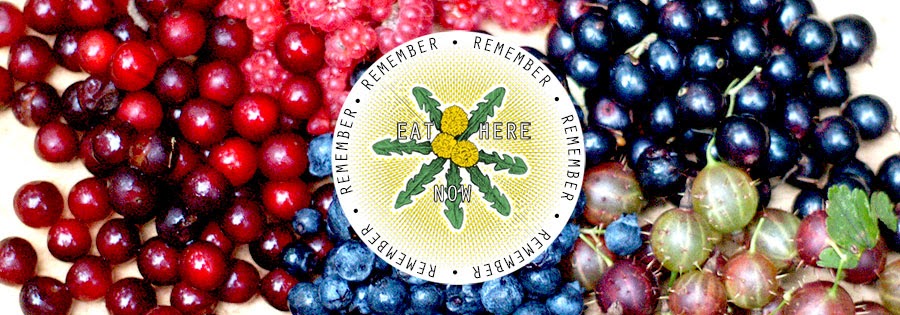 Eat Here Now,
at its core, is a manifesto. This manifesto—centered around the age old
practice of harvesting, preparing, and consuming nature's wild
larder—is one of living in close connection to our place in the world.
Through food, drink, and medicine, wild plants (and organisms) offer
some of the most nutritious, flavorful, and cost-effective (read: FREE)
goodies available. In the day and age of an industrial food &
agriculture system, a systemically faltered gastronomy, and a paramount
lack of ecological literacy, we at Eat Here Now tread a different path
around all of this. & That path follows wild foods.
The idea driving Eat Here Now is that anyone can remember how to
identify, harvest and store away the myriad of seasonal foods available
in the wild; that you too can become a forager. Our mission is guided by
a concept known as participatory ecology—the active integration
of people and nature in a way that fosters a deep sense of awareness and
connection to ecology in our daily lives. We want our course
participants to see nature not as a museum that needs to be preserved
and curated, but as a dance that needs to be learned, the natural
systems that surround us being daily reminders of where to get dance
lessons. In this way, Eat Here Now uses wild food education as a gateway
into and a fulcrum of, a life in tune with the cycles, processes and
wonders of the natural world.
Eat Here Now,
at its core, is a manifesto. This manifesto—centered around the age old
practice of harvesting, preparing, and consuming nature's wild
larder—is one of living in close connection to our place in the world.
Through food, drink, and medicine, wild plants (and organisms) offer
some of the most nutritious, flavorful, and cost-effective (read: FREE)
goodies available. In the day and age of an industrial food &
agriculture system, a systemically faltered gastronomy, and a paramount
lack of ecological literacy, we at Eat Here Now tread a different path
around all of this. & That path follows wild foods.
The idea driving Eat Here Now is that anyone can remember how to
identify, harvest and store away the myriad of seasonal foods available
in the wild; that you too can become a forager. Our mission is guided by
a concept known as participatory ecology—the active integration
of people and nature in a way that fosters a deep sense of awareness and
connection to ecology in our daily lives. We want our course
participants to see nature not as a museum that needs to be preserved
and curated, but as a dance that needs to be learned, the natural
systems that surround us being daily reminders of where to get dance
lessons. In this way, Eat Here Now uses wild food education as a gateway
into and a fulcrum of, a life in tune with the cycles, processes and
wonders of the natural world.How Eat Here Now Works
Eat Here Now offers
classes, foraging courses, and write & share articles on wild
plants and foraging, and recipes on how to make wild foods into amazing
food, libations, and simple medicinal preparations.
What is "Wild Food"?
In the dialogue of Eat Here Now the words wild food carry three particular connotations:- Plants & Plant Yields: greens, shoots, roots, flowers, seeds, nuts, and fruits, harvested from wild settings—from lawns, to meadows, to swamps, to weedy edges of gardens or farm fields. Any "technically" uncultivated plant part, in our books, is considered a wild food.
- Wild Fermentation: cultures of bacteria and yeast that ferment wine, cider, beer, fermented legumes (miso), vegetables (sauerkraut), dairy products (yougrt, kefir), and other various foods fermented using wild cultures.
- Medicine: maybe you've heard the almost cliche Hippocrates quote, "Let thy food be thy medicine and thy medicine be thy food."? It's too truthful not to use it... More to the point, wild foods are for the majority very nutritious (more nutritious than most cultivated foods) and inherently supportive of health. But we are also concerned with the process of harvesting and preparing medicine from wild plants. From time to time, we will discuss the many ways we use wild plants as medicine in our daily life.
About Mark
 |
| Photo thanks to Stevie Blyler |
